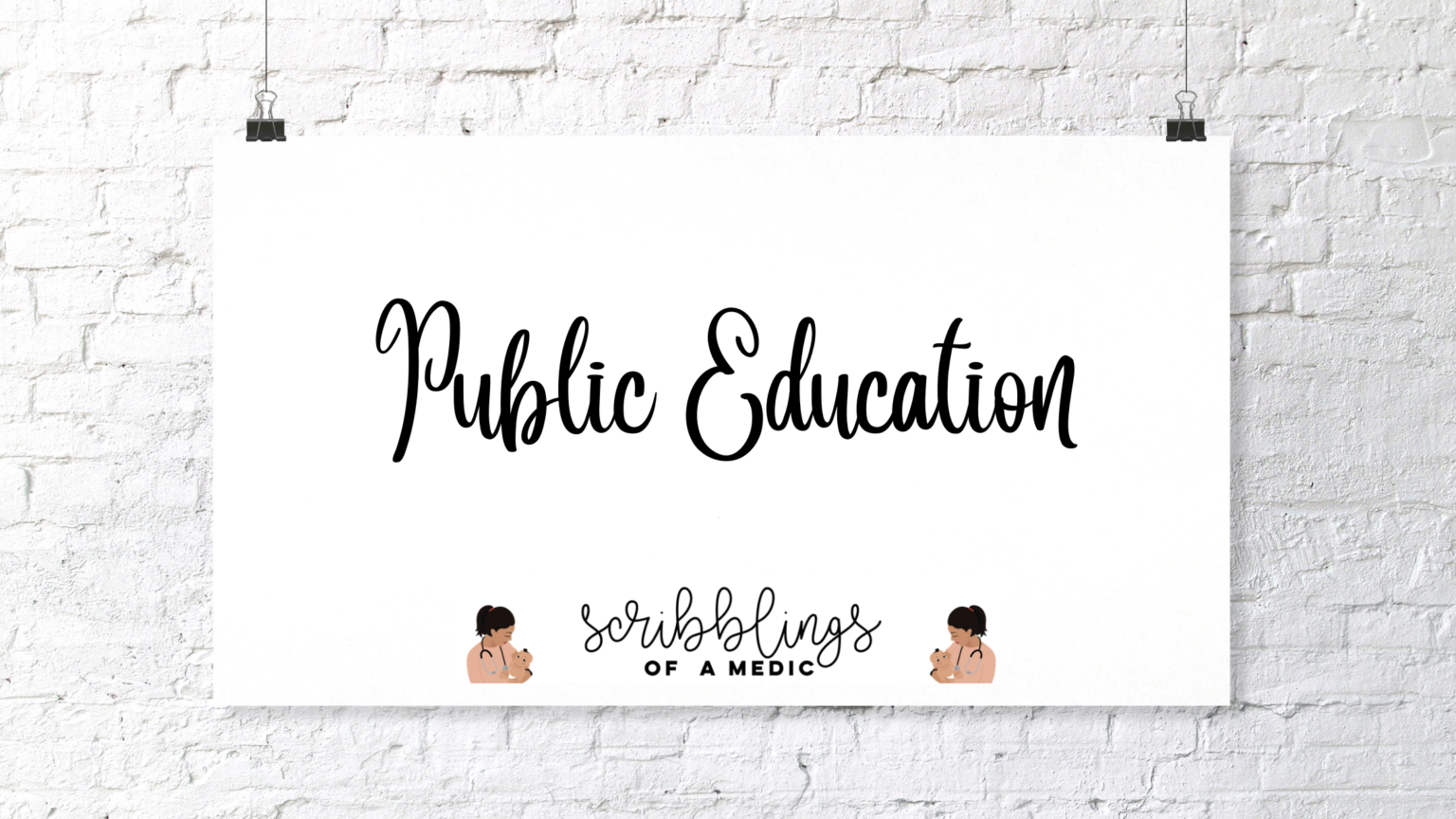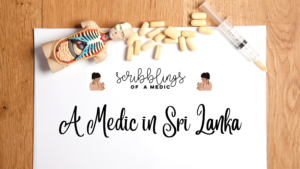Menstruation has for a long time been a subject of much taboo and stigma. So stigmatized in fact, that many young girls and women do not know the exact mechanism by which it happens and the sanitation options available. This post is going to be a quick summary about menstruation (what happens and why it happens) and the different types of menstrual products available in Sri Lanka.
What’s going on down there?
Menstruation first starts occurring in every young girl between the ages of 9 and 15 years (but on average occurs around 13 years) and continues until the woman reaches menopause. Menstruation is a sign that a girl is going through puberty. Other signs of puberty include breast development and pubic hair growth.
A menstrual period occurs approximately every month and is controlled by hormone levels. The hormones basically prepare the uterus for a pregnancy every month. After one period finishes (let’s call it day 0), the lining of the uterus thickens in preparation for a possible pregnancy. Around day 14 (2 weeks later), hormone changes cause the ovaries to release an egg. This egg travels all the way through the fallopian tubes of your uterus (see diagram below) in hopes of meeting a sperm for fertilization and ultimately the formation of an embryo which could develop into a baby. If the egg meets a sperm and becomes fertilized, that fertilized egg will implant into the thickened uterine lining which provides a cushy environment for the embryo to develop into a baby. When no pregnancy occurs, the egg and thickened tissue lining (known as endometrial tissue) are shed through the vagina as menstrual blood or a “period”.

Source: https://www.mskcc.org/cancer-care/patient-education/fertility-preservation-women-starting-treatment
The colour and quantity of the blood, as well as the duration of bleeding, varies between women. The 1st 2 days are usually the heaviest, and bleeding usually lasts between 5-7 days. When the uterine lining is shed, it can be associated with abdominal pain/cramps. It is normal to also pass small clots as the collected blood does tend to clot.
This normal biological process has so much stigma attached to it that many Sri Lankan parents do not send their daughters to school during their period. The lack of affordable sanitary tools such as sanitary pads and the lack of proper toilets in schools for girls to change their pads is also a reason for parents to keep their daughters at home. The use of cloths as sanitary napkins is still commonly used in rural areas of Sri Lanka – however, the use of these clothes is not hygienic and can easily result in both infection and leakage during use. When a cloth is used, it has to be thoroughly washed and then dried in the sun to kill all possible microbes. Once dried, it must be stored in a dry place in a case until the next use.
 Source: https://jezebel.com/women-flushing-pads-and-tampons-down-the-toilet-is-floo-1745941699
Source: https://jezebel.com/women-flushing-pads-and-tampons-down-the-toilet-is-floo-1745941699
Below I will discuss the other available options for girls and women to use during their periods – discussing both the advantages and disadvantages of each method. Menstruation should not be a reason for a girl to miss school and it should not be seen as a disadvantage.
The good old sanitary pad & its’ new reusable counterpart
Sanitary pads have been around FOREVER. This non-invasive method is the most common tool used to collect menstrual blood and numerous types of sanitary pads are available. The pad commonly used has a sticky surface that grips onto the underwear. Some pads have wings which further help secure the sanitary pad onto the underwear. The pad should be changed every couple of hours depending on the menstrual flow. Heavy pads exist for overnight wear, but still should be changed every 4-6 hours. The original sanitary pad is actually made of biocellulose and plastic components, and therefore, is non-biodegradable. This fills up landfills for hundreds of years and that’s a lot of waste.
Advantages– easy to use, easy to find (basically every convenience store and supermarket will have sanitary pads in stock) and there is no messy insertion.
Disadvantages– the material used can cause irritation and it is not eco-friendly/biodegradable. The period tax is a real thing as this product is taxed heavily. Affordable local products do exist where the cost is approximately Rs.120/= for a packet of 10 pads. There is also the risk of leaking.
The reusable counterpart of the plastic sanitary napkin is the cloth reusable sanitary pad which can be washed, dried and reused. It is more expensive than the plastic pad, but as it can be reused, it ends up being cost-effective in the long run and you’re saving the environment at the same time! The only downside is that it may take a while to get used to washing out the blood – especially if you’re squimish.
In Sri Lanka, you can purchase the reusable pad at the good market shop or via the Momiji website.
The trivial tampon
Not going to lie this was a struggle for me and the first time I used it I literally thought I was going to end up in the emergency room. My best friend had to come into the bathroom to help me figure this one out. The tampon is an absorbable material folded into the shape of a little tube that is contained within a thin bullet-shaped plastic vessel. This is gently inserted into the vagina by pushing in the absorbable material and then removing the plastic applicator. A string will hang out of the vagina, making removal is easy. The tampon absorbs the menstrual blood and as it is internal, it can be easily forgotten. It is therefore important that you remember to regularly change your tampon. If a tampon is kept in for long hours, the menstrual blood absorbed tampon is the perfect environment for dangerous bacteria to colonize and cause disease.
Advantages – easy to carry around and you can swim safely whilst you use a tampon (sanitary pads are external and will soak up all the water if you swim – weighing you down)! No uncomfortable feeling down there when the plastic rubs and you can wear whatever you want.
Disadvantages – Serious risk if left in for long – Toxic shock syndrome! It can also absorb normal vaginal fluid if left in for long, thereby drying the vaginal environment and changing the normal bacterial flora – this increases the risk of other infections occurring. They also can be a challenge to use at first (I’m a prime example) and may be difficult to insert. Should not be left in overnight and cannot be worn with light flows (no lubrication for insertion and increased absorption of vaginal fluids). Tampons are not easily found in Sri Lanka, but some supermarkets and online instagram sellers do keep stocks.
The menstrual cup
Claimed to be the best thing ever by so many women in Sri Lanka. This product is a bit new to the Sri Lankan market and is made from flexible medical grade silicone and fits perfectly into the vagina. There are many cup sizes depending on your menstrual flow. Again like the tampon it requires insertion using a special fold (there are different types of folds) and once inserted it opens up to sit neatly in the vagina. The cup then collects all the menstrual blood. The cup should be removed a few times a day (every 4-12 hours depending on the flow) – it has a stem to remove the cup – and the collected blood should then be disposed of appropriately in the commode. The cup is then washed and reinserted if necessary. Once the bleeding is completed, the cup is then boiled for a couple of minutes and then stored until the next period.
Advantages – the cup lasts for approximately 5 years and is very eco-friendly. It is very very rare to get toxic shock syndrome due to menstrual cup use (much more scarce than with the tampon).
Disadvantages – again like with the tampon it is a little squimish to remove and you have to dispose of the blood (you will get used to it)! Insertion also takes a little practice. You will also need access to water to clean it before reinsertion (not a big deal to most, but maybe a problem when travelling).
This can be purchased at the good market shop as well or via Nadeesha Paulis @happybleeding (check out her instagram).
Below are some common questions, facts and myths about menstruation –
- Period poop is a thing!
Yes, it is! The hormones that act on the uterus to make it contract and shed the uterine lining also act on the bowel making you poop more!
- Yes, you should have a wash when you have a period.
During menstruation, the hormone levels change and you tend to sweat more. It is important to bathe regularly and keep clean during this time.
- Yes, you can swim whilst on your period.
It is absolutely no problem to swim whilst on your period. Yes due to the back-pressure of the water, your period will temporarily stop. This is completely normal and your period will resume soon after. Please note that you cannot wear a sanitary pad whilst swimming, but can wear a tampon/menstrual cup.
- Yes, you can get pregnant if you have sex whilst on your period…..
……. but it’s an extremely low chance. Sperm can survive up to 5 days in your uterus and if you have sex towards the end of your period, you can get pregnant if you ovulate 5 days later. This is extremely rare but can happen. Period sex can be messy, what with all the menstrual blood, but since people do have sex whilst menstruating remember it is safe to still use protection.
- Menstrual cramps are common, but should not interfere with your daily activities.
All those with a uterus will experience the curse that is menstrual cramps, but this should not be so overwhelming that simple painkillers like paracetamol or mefenamic acid will not control the pain. If the cramps do interfere with your day to day life, you must seek medical advice from a Consultant Obstetrician & Gynaecologist to rule out any underlying causes such as endometriosis or ovarian cysts. Most of the time there is no particular underlying cause, but it is important to make sure. I have suffered from painful periods (a.k.a dysmenorrhoea) for a very long time and was on the oral contraceptive pill throughout my clinical years of medical school. I was investigated thoroughly and no proper cause was found (which is very common). Currently, I manage the pain with oral painkillers and lots of sleep, but yes sometimes it is very difficult to carry out my day to day activities during my period.
So in conclusion, menstruation is a normal biological process that all biological females go through. There are quite a few options of menstrual hygiene products available and as much as possible, girls and women should move on from clothe use which is not sanitary at all. So much stigma and taboo surrounds this topic because people are embarrassed to discuss it. This has left more generations without proper knowledge about menstruation and the creation of many myths. I’ve heard some wild beliefs that people have concerning menstruation, what are the wildest things you’ve heard?






